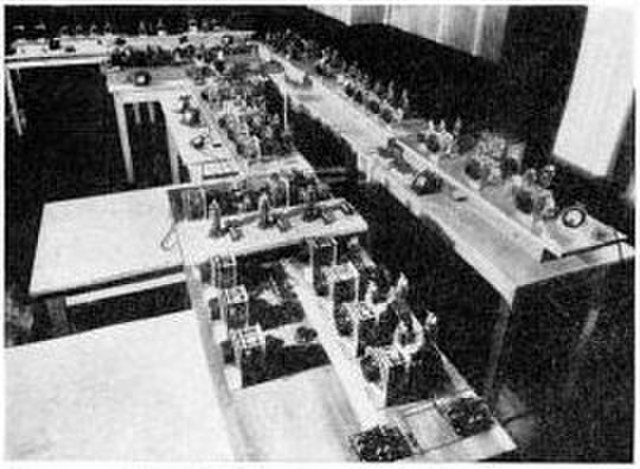KENZ is a commercial FM radio station licensed to Provo, Utah and serving the Salt Lake City metropolitan area. It broadcasts a top 40 (CHR) radio format simulcast with 101.9 KHTB Ogden and is owned and operated by Cumulus Media. The radio studios are located in South Salt Lake, near the I-15/I-80 interchange.
KENZ's radio tower, located atop Lake Mountain.
FM broadcasting is a method of radio broadcasting that uses frequency modulation (FM) of the radio broadcast carrier wave. Invented in 1933 by American engineer Edwin Armstrong, wide-band FM is used worldwide to transmit high-fidelity sound over broadcast radio. FM broadcasting offers higher fidelity—more accurate reproduction of the original program sound—than other broadcasting techniques, such as AM broadcasting. It is also less susceptible to common forms of interference, having less static and popping sounds than are often heard on AM. Therefore, FM is used for most broadcasts of music and general audio. FM radio stations use the very high frequency range of radio frequencies.
A commercial 35 kW FM radio transmitter built in the late 1980s. It belongs to FM radio station KWNR, in Henderson, Nevada, and broadcasts at 95.5 MHz.
FM has better rejection of static (RFI) than AM. This was shown in a dramatic demonstration by General Electric at its New York lab in 1940. The radio had both AM and FM receivers. With a million-volt arc as a source of interference behind it, the AM receiver produced a roar of static, while the FM receiver clearly reproduced a music program from Armstrong's experimental FM transmitter in New Jersey.
Crossed-dipole antenna array of station KENZ's 94.9 MHz, 48 kW transmitter on Lake Mountain, Utah. It radiates circularly polarized radio waves.
Armstrong's first prototype FM broadcast transmitter, located in the Empire State Building, New York City, which he used for secret tests of his system between 1934 and 1935. Licensed as experimental station W2XDG, it transmitted on 41 MHz at a power of 2 kW.





